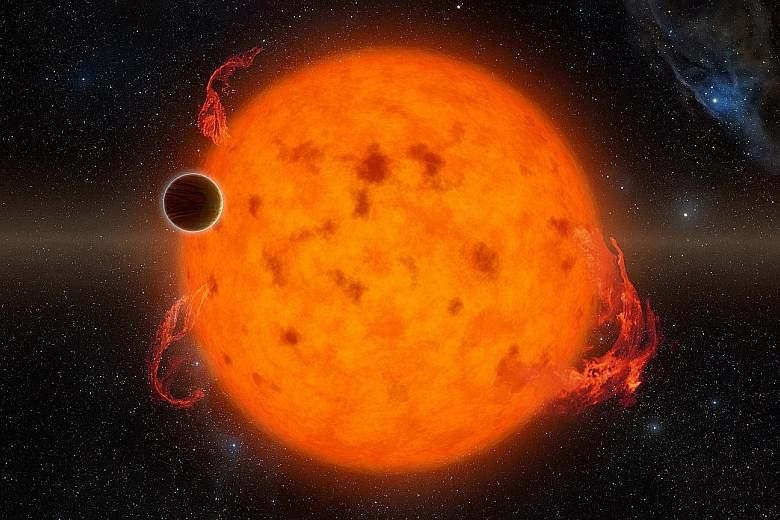WASHINGTON • It is rare to discover a newborn planet. It is even rarer to discover one that lives so close to its sun that it can race all the way around it in just five days.
But two newfound exoplanets do just that. Not only are they some of the youngest, strangest planets ever discovered; scientists say their discovery could help demystify the process of planet formation.
The younger of the two new planets, reported on Monday in the journal Nature, was found orbiting the star V830 Tau about 430 light years away from Earth. V830 Tau is just two million years old (a fraction of our own Sun's 4.6 billion years), meaning it had hardly any time at all to acquire a planet.
But astronomers at the Canada- France-Hawaii telescope on Mauna Kea in Hawaii noticed that the star showed a noticeable "wobble" every 4.9 days - a sign that something very large was orbiting around it and tugging it ever so slightly with its gravity. Study revealed a "hot Jupiter". Hot Jupiters are large, Jupiter-sized planets, close to their star and with very high surface temperatures.
From a different telescope on the same mountain, gazing at a different corner of the universe at the same time, a separate team noticed that the star K2-33 seemed to dim at regular intervals, indicating that a planet was passing in front of it. That was how they found "super Neptune" K2-33b - six times the size of Earth and between 500 and 1,000 times younger. It is also very hot, being 20 times closer to its sun than Earth is to ours, and it completes its orbit in just five days.
Much of what we know about planet formation comes from older planets. That makes understanding how these planets came to be, a Nasa statement noted, like trying to understand human development by studying only adults. These two new examples are the planetary equivalent of weeks-old infants.
When new exoplanets were first being found, it was thought that large Jupiter-sized planets could only form far away from their star - much as Jupiter did. Then more and more large exoplanets were found close to their parent stars, and scientists realised these "hot Jupiters" must develop farther out and then "migrate" in. But that process was thought to take hundreds of millions of years - far longer than these two exoplanets have existed.
Either hot Jupiters must be migrating a lot faster than scientists expected, or they really can form close to stars. The researchers studying V830 Tau say their discovery supports the first explanation.
We should be grateful the same phenomenon never happened in our solar system, said astronomer Andrew Mann of the University of Texas at Austin. "If Jupiter or Neptune had migrated inward after the terrestrial planets formed," he said, "it seems unlikely that our solar system would have an Earth, or any of the terrestrial planets at all."
WASHINGTON POST

